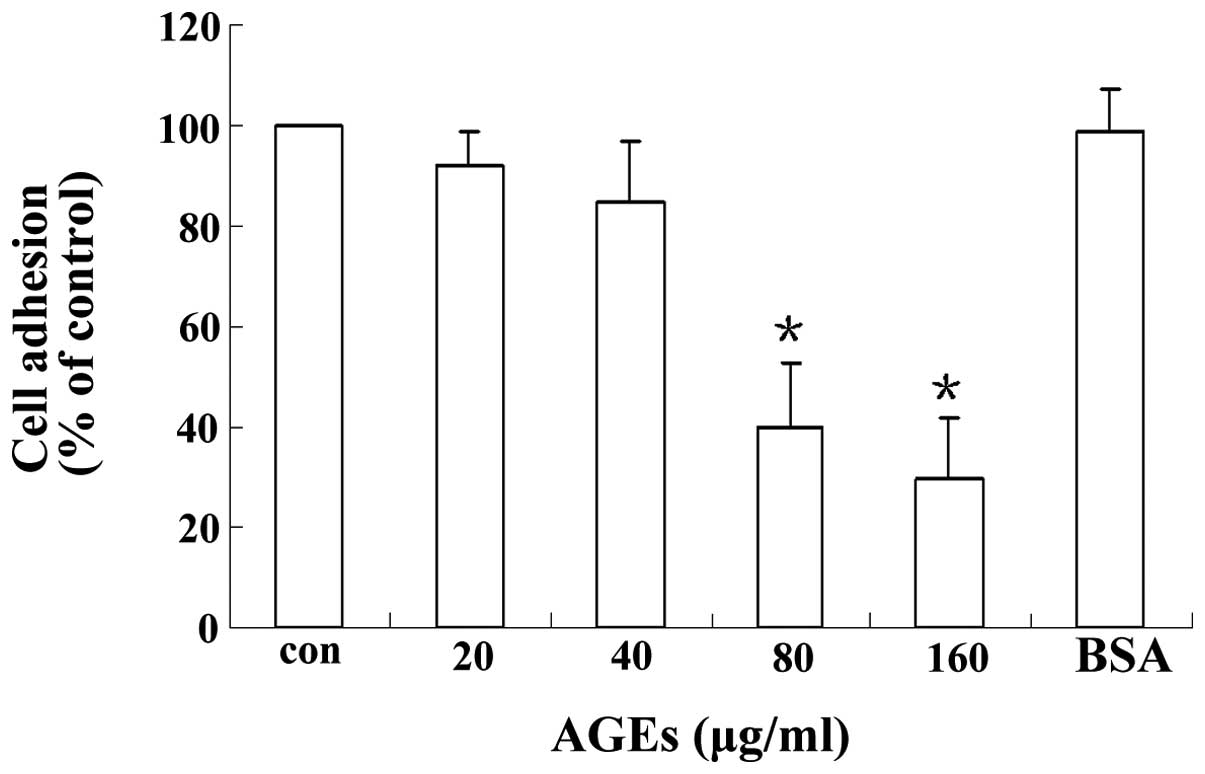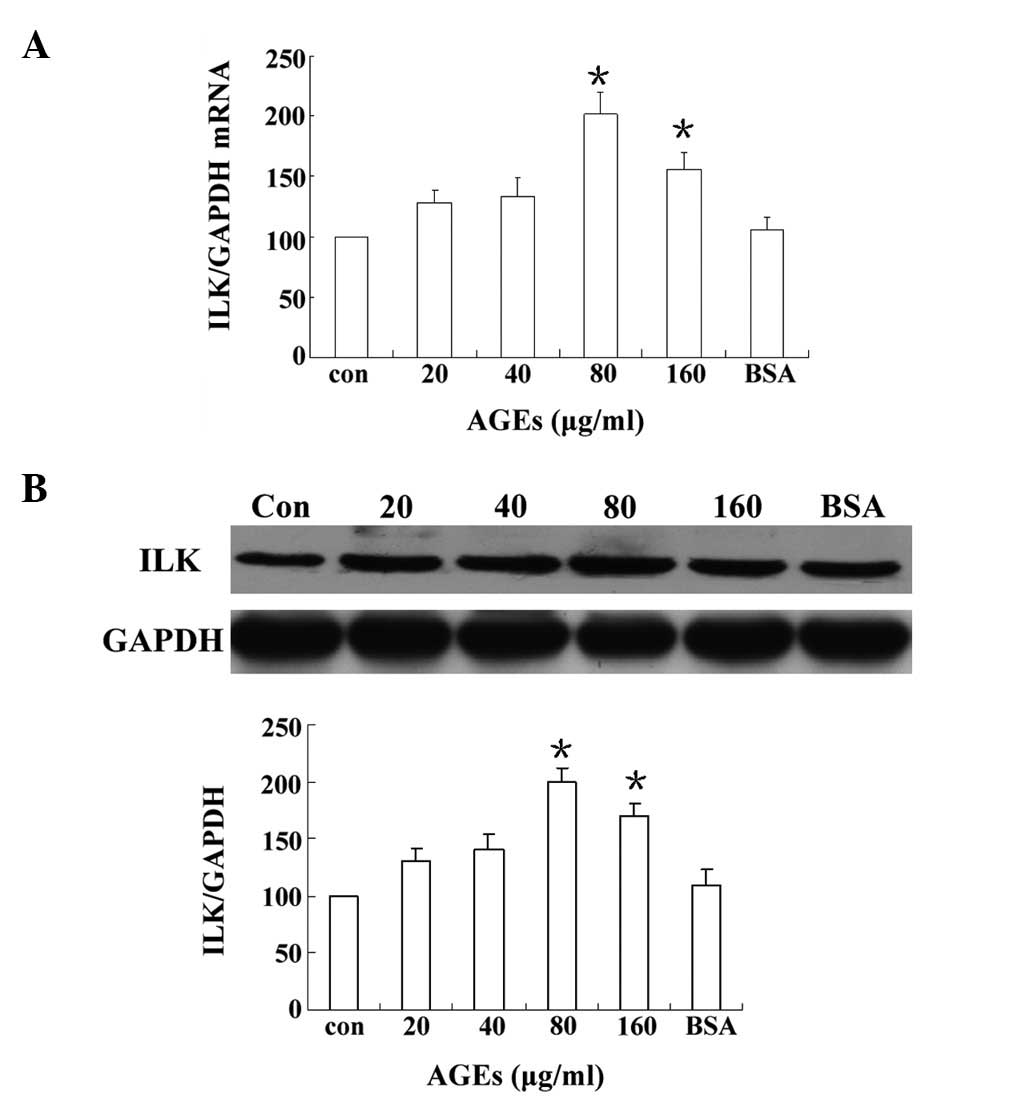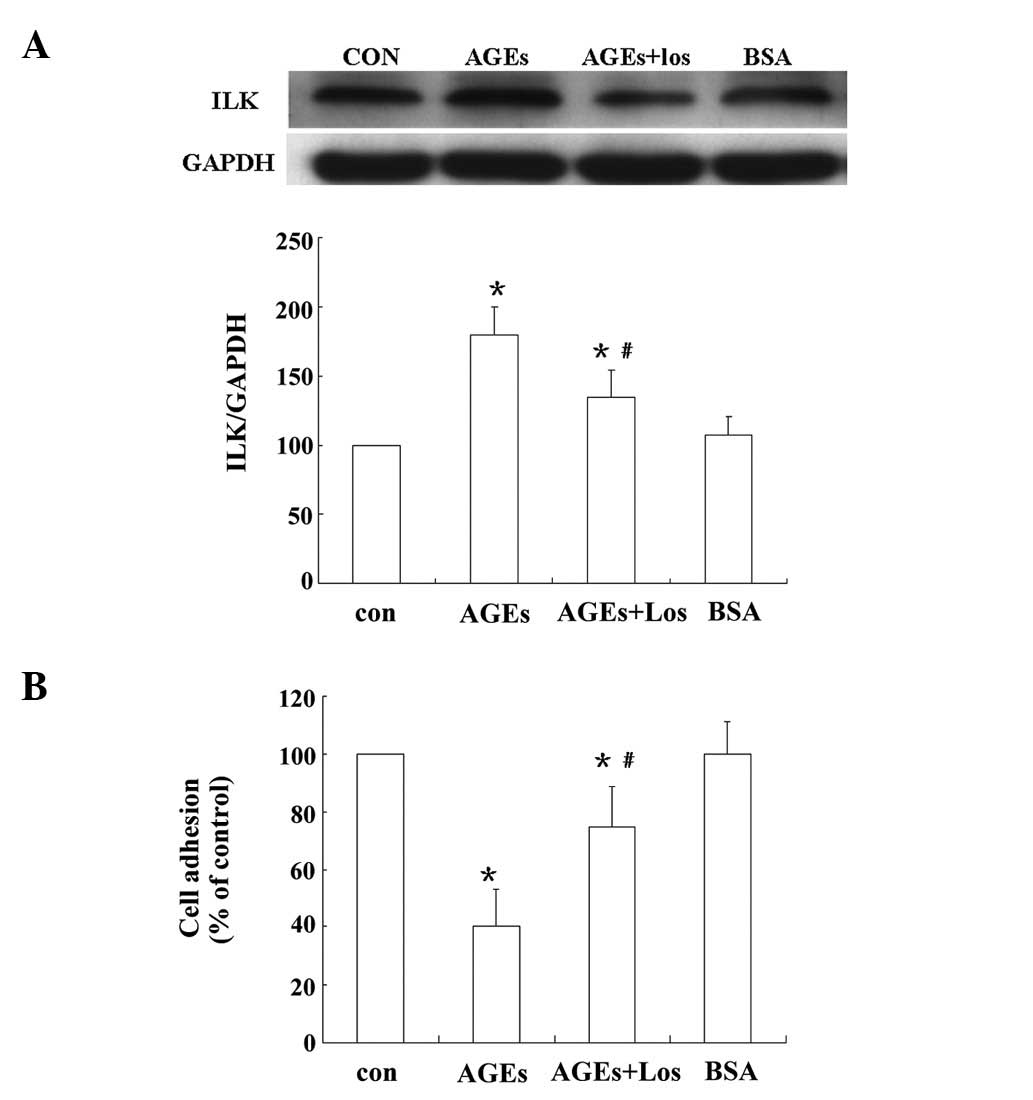|
1
|
Raj DS, Choudhury D, Welbourne TC and Levi
M: Advanced glycation end products: a Nephrologist’s perspective.
Am J Kidney Dis. 35:365–380. 2000.PubMed/NCBI
|
|
2
|
Ichikawa I, Ma J, Motojima M and Matsusaka
T: Podocyte damage damages podocytes: autonomous vicious cycle that
drives local spread of glomerular sclerosis. Curr Opin Nephrol
Hypertens. 14:205–210. 2005. View Article : Google Scholar : PubMed/NCBI
|
|
3
|
Nakamura T, Ushiyama C, Suzuki S, et al:
Urinary excretion of podocytes in patients with diabetic
nephropathy. Nephrol Dial Transplant. 15:1379–1383. 2000.
View Article : Google Scholar : PubMed/NCBI
|
|
4
|
Fogo AB: Mechanisms of progression of
chronic kidney disease. Pediatr Nephrol. 22:2011–2022. 2007.
View Article : Google Scholar
|
|
5
|
Kang YS, Li Y, Dai C, et al: Inhibition of
integrin-linked kinase blocks podocyte epithelial-mesenchymal
transition and ameliorates proteinuria. Kidney Int. 78:363–373.
2010. View Article : Google Scholar
|
|
6
|
Gross ML, El-Shakmak A, Szábó A, et al:
ACE-inhibitors but not endothelin receptor blockers prevent
podocyte loss in early diabetic nephropathy. Diabetologia.
46:856–868. 2003. View Article : Google Scholar : PubMed/NCBI
|
|
7
|
Langham RG, Kelly DJ, Cox AJ, et al:
Proteinuria and the expression of the podocyte slit diaphragm
protein, nephrin, in diabetic nephropathy: effects of angiotensin
converting enzyme inhibition. Diabetologia. 45:1572–1576. 2002.
View Article : Google Scholar : PubMed/NCBI
|
|
8
|
Misfud SA, Allen TJ, Bertram JF, et al:
Podocyte foot process broadening in experimental diabetic
nephropathy: amelioration with renin-angiotensin blockade.
Diabetologia. 44:878–882. 2001. View Article : Google Scholar : PubMed/NCBI
|
|
9
|
Cheng CL, Tang Y, Zheng Z, et al: Advanced
glycation end-products activate the renin-angiotensin system
through the RAGE/PI3-K signaling pathway in podocytes. Clin Invest
Med. 35:E2822012.PubMed/NCBI
|
|
10
|
Jefferson JA, Shankland SJ and Pichler RH:
Proteinuria in diabetic kidney disease: A mechanistic view point.
Kidney Int. 74:22–36. 2008. View Article : Google Scholar : PubMed/NCBI
|
|
11
|
Petermann AT, Pippin J, Krofft R, et al:
Viable podocytes detach in experimental diabetic nephropathy:
potential mechanism underlying glomerulosclerosis. Nephron Exp
Nephrol. 98:e114–e123. 2004. View Article : Google Scholar
|
|
12
|
Yu D, Petermann A, Kunter U, et al:
Urinary podocyte loss is a more specific marker of ongoing
glomerular damage than proteinuria. J Am Soc Nephrol. 16:1733–1741.
2005. View Article : Google Scholar : PubMed/NCBI
|
|
13
|
Fukuda A, Wickman LT, Venkatareddy MP, et
al: Angiotensin II-dependent persistent podocyte loss from
destabilized glomeruli causes progression of end stage kidney
disease. Kidney Int. 81:40–55. 2012. View Article : Google Scholar : PubMed/NCBI
|
|
14
|
Dai HY, Zheng M, Tang RN, et al:
Inhibition of integrin-linked kinase by angiotensin II receptor
antagonist, irbesartan attenuates podocyte injury in diabetic rats.
Chin Med J (Engl). 125:888–893. 2012.PubMed/NCBI
|
|
15
|
Yang Y, Guo L, Blattner SM, et al:
Formation and phosphorylation of the PINCH-1-integrin linked
kinase-alpha-parvin complex are important for regulation of renal
glomerular podocyte adhesion, architecture, and survival. J Am Soc
Nephrol. 16:1966–1976. 2005. View Article : Google Scholar
|
|
16
|
Yamaguchi Y, Iwano M, Suzuki D, et al:
Epithelial-mesenchymal transition as a potential explanation for
potential explanation for podocyte depletion in diabetic
nephropathy. Am J Kidney Dis. 54:653–664. 2009. View Article : Google Scholar : PubMed/NCBI
|
|
17
|
Jennings DL, Kalus JS, Coleman CL, et al:
Combination therapy with an ACE inhibitor and an angiotensin
receptor blocker for diabetic nephropathy: a meta-analysis. Diabet
Med. 24:486–493. 2007. View Article : Google Scholar : PubMed/NCBI
|
|
18
|
Barisoni L and Mundel P: Podocyte biology
and the emerging understanding of podocyte diseases. Am J Nephrol.
23:353–360. 2003. View Article : Google Scholar : PubMed/NCBI
|
|
19
|
Liebau MC, Lang D, Böhm J, et al:
Functional expression of the renin-angiotensin system in human
podocytes. Am J Physiol Renal Physiol. 290:F710–F719. 2006.
View Article : Google Scholar : PubMed/NCBI
|
|
20
|
Yadav A, Vallabu S, Arora S, et al: ANG II
promotes autophagy in podocytes. Am J Physiol Cell Physiol.
299:C488–C496. 2010. View Article : Google Scholar : PubMed/NCBI
|
|
21
|
Hsu HH, Hoffmann S, Endlich N, et al:
Mechanisms of angiotensin II signaling on cytoskeleton of
podocytes. J Mol Med (Berl). 86:1379–1394. 2008. View Article : Google Scholar : PubMed/NCBI
|
|
22
|
Pedchenko VK, Chetyrkin SV, Chuang P, et
al: Mechanism of perturbation of integrin-mediated cell-matrix
interactions by reactive carbonyl compounds and its implication for
pathogenesis of diabetic nephropathy. Diabetes. 54:2952–2960. 2005.
View Article : Google Scholar : PubMed/NCBI
|
|
23
|
Bondeva T, Wojciech S and Wolf G: Advanced
glycation end products inhibit adhesion ability of differentiated
podocytes in a neuropilin-1-dependent manner. Am J Physiol Renal
Physiol. 301:F852–F870. 2011. View Article : Google Scholar : PubMed/NCBI
|
|
24
|
Dessapt C, Baradez MO, Hayward A, et al:
Mechanical forces and TGFbeta1 reduce podocyte adhesion through
alpha3beta1 integrin downregulation. Nephrol Dial Transplant.
24:2645–2655. 2009. View Article : Google Scholar : PubMed/NCBI
|
|
25
|
Kramer A, van den Hoven M, Rops A, et al:
Induction of glomerular heparanase expression in rats with
adriamycin nephropathy is regulated by reactive oxygen species and
the renin-angiotensin system. J Am Soc Nephrol. 17:2513–2520. 2006.
View Article : Google Scholar
|












